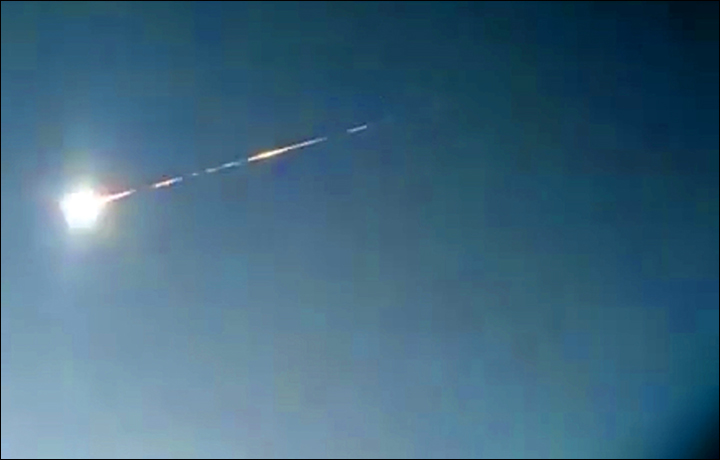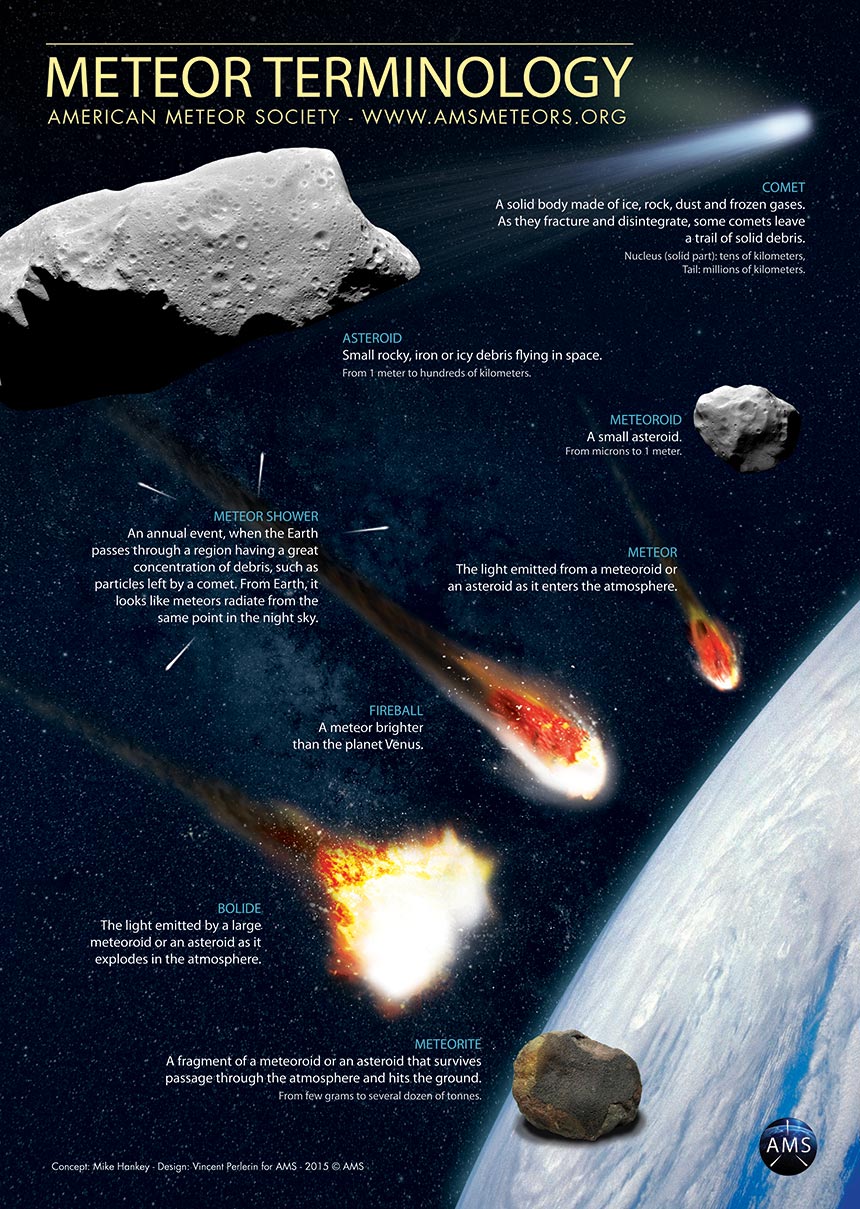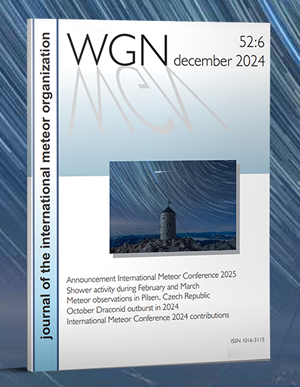
On April 6, 2019, around 12:00 UTC (19:00 local time), a bright fireball lit up the sky over Russia once again. It was the third object that entered the atmosphere over this area in the last few months. Just recently, an asteroid hit the Earth over the Bering Sea (18 December 2018) and another fireball was visible over the Krasnoyarsk region on 15 March 2019.
There are many reports of this fireball and also some recorded observations. These dashcam videos show how bright the event really was and hints at a large entering object.
The unusually good visibility suggests a large object with a high energy. With support from the BGR and CTBTO the infrasound data of the International Monitoring System of the CTBTO was analysed by NEMO. The signal of the fireball was caught on at least two sites and the energy could be determined. Preliminary analysis suggest an energy of 0.4 kt TNT.
This would correspond to an entering object with a size of about 1 m. A size this big would place it right at the asteroid threshold.
CNEOS/JPL analysis of US Government sensor data also show the fireball. They found a time of 11:59:09 UT and a location of 56.5° N, 94.9° E. The velocity was determined to be 18.1 km/s and the source energy was estimated to be 0.22 kt TNT.
Fireball?
Several thousand meteors of fireball magnitude occur in the Earth’s atmosphere each day. The vast majority of these, however, occur over the oceans and uninhabited regions, and a good many are masked by daylight. Those that occur at night also stand little chance of being detected due to the relatively low numbers of persons out to notice them.
Additionally, the brighter the fireball, the more rare is the event. As a general thumb rule, there are only about 1/3 as many fireballs present for each successively brighter magnitude class, following an exponential decrease. Experienced observers can expect to see only about 1 fireball of magnitude -6 or better for every 200 hours of meteor observing, while a fireball of magnitude -4 can be expected about once every 20 hours or so.





 You saw something bright and fast? Like a huge shooting star? Report it: it may be a fireball.
You saw something bright and fast? Like a huge shooting star? Report it: it may be a fireball.  You counted meteors last night? Share your results with us!
You counted meteors last night? Share your results with us!  You took a photo of a meteor or fireball? You have a screenshot of your cam? Share it with us!
You took a photo of a meteor or fireball? You have a screenshot of your cam? Share it with us!  You caught a meteor or fireball on video? Share your video with us!
You caught a meteor or fireball on video? Share your video with us!